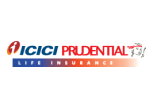Different Types of Assets to Invest
Getting into the world of investing? Deciding where to put your money is critical, and the sheer number of choices can feel like both an exciting opportunity and a bit of a head-scratcher. This guide is all about making things clearer. We're going to explore the different types of asset classes out there. By understanding these, you can fine-tune your investment strategy to fit just right with your own comfort level and financial goals. Let's dive in and make some smart, informed choices together!
Table of Contents
What is an Asset Class?
An asset class is a group of financial instruments or investments that exhibit similar characteristics and behave similarly in the marketplace. The classification into different asset classes is based on the nature of the investments, the risk involved, and the returns they typically offer. Understanding asset classes is crucial as it forms the basis for allocating your investments in a way that matches your investment strategy and risk appetite.
There are several primary asset classes:
- Equities (Stocks): Represent ownership in a company. Stocks are known for their potential for high returns, but they come with higher risk due to market volatility.
- Bonds (Fixed-Income Securities): These are debt instruments where an investor loans money to an entity (corporate or governmental) that borrows the funds for a defined period at a fixed interest rate.
- Real Estate: Involves investing in physical property. Real estate can be a source of steady income and can appreciate in value over time.
- Commodities: Physical goods like gold, oil, and agricultural products. Commodities can be volatile and are often used as a hedge against inflation.
- Cash and Cash Equivalents: Includes assets that can be quickly converted to cash, such as money market instruments. They are low risk but also offer lower returns.
Each asset class comes with its own risk and return profile, and understanding these can help you build a diversified investment portfolio that aligns with your financial goals.
Types of Assets to Invest in
|
Asset Class |
Description |
Risk Level |
Liquidity |
Returns |
Examples |
Fixed Assets |
Investments in bonds, fixed deposits, etc. |
Low to Moderate |
Moderate to High |
Moderate to High |
Government bonds, CDs, fixed deposits |
Equity |
Ownership in stocks, representing companies |
High |
High |
High |
Shares of publicly traded companies |
Real Estate |
Investment in physical properties |
Moderate to High |
Low to Moderate |
Moderate to High |
Residential, commercial, or rental properties |
Commodities |
Investments in physical goods like gold |
Moderate to High |
Low to Moderate |
Moderate to High |
Gold, silver, oil, agricultural products |
Cash and Equivalents |
Highly liquid assets like cash and equivalents |
Low |
Very High |
Low |
Cash, money market funds, treasury bills |
Derivatives |
Financial contracts derived from an underlying asset |
High |
High |
High |
Futures, options, swaps |
Final Thoughts
Understanding the diverse world of asset classes is a key component of successful investing. From the stability of fixed income to the growth potential of equities, the tangibility of real estate to the diversification offered by commodities, and the unique opportunities in alternative investments, each asset class plays a distinct role in a well-rounded investment portfolio. By understanding these classes and strategically diversifying investments among them, investors can balance risk and return, tailor their portfolios to meet specific financial goals, and get through various market conditions with greater confidence.
FAQs
- What are the main types of asset classes?
The main types include equities (stocks), fixed income (bonds), real estate, commodities, cash and cash equivalents, and alternative investments.
2. Why is diversification across asset classes important?
Diversification helps reduce risk by spreading investments across various asset classes that react differently to the same economic events.
3. Can investing in just one asset class be risky?
Yes, concentrating investments in a single asset class can expose you to higher risk due to lack of diversification.
4. What are fixed income assets?
Fixed income assets, like bonds, are debt investments where an investor loans money to an issuer in exchange for regular interest payments and the return of principal at maturity.
5. Why are equities considered a growth-oriented investment?
Equities represent ownership in companies and have the potential for capital appreciation and dividends, making them suitable for growth-oriented strategies.
6. What makes real estate a unique asset class?
Real estate involves investing in physical properties and is valued for its potential for income generation, capital appreciation, and as an inflation hedge.
7. How do commodities provide diversification?
Commodities, such as gold or oil, often have a low correlation with stocks and bonds, providing a hedge against inflation and diversifying the portfolio.
8. What are alternative investments?
Alternative investments include non-traditional assets like private equity, hedge funds, and tangible assets like art, which offer unique risk-return profiles.
9. Are cash equivalents a good long-term investment?
While cash equivalents offer liquidity and low risk, they typically provide lower returns and may not be ideal for long-term growth, especially after accounting for inflation.
10. How often should an investment portfolio be rebalanced?
Portfolio rebalancing depends on individual investment goals and market conditions, but it's generally recommended to review and rebalance at least annually or after significant market movements.




























